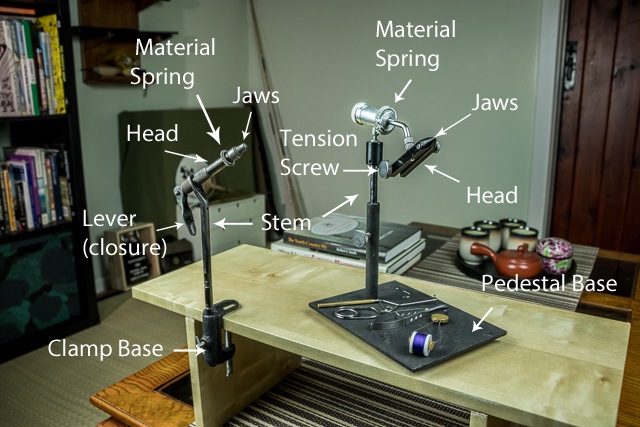Fly Tying: Getting Inspired, Getting the Right Stuff and Getting Better
Here’s a guide to get you inspired in your fly tying and to point you towards the kit and the info you might need to make your journey more successful and fun. If you want to skip straight to the section of embedded Free, Fly tying videos CLICK HERE
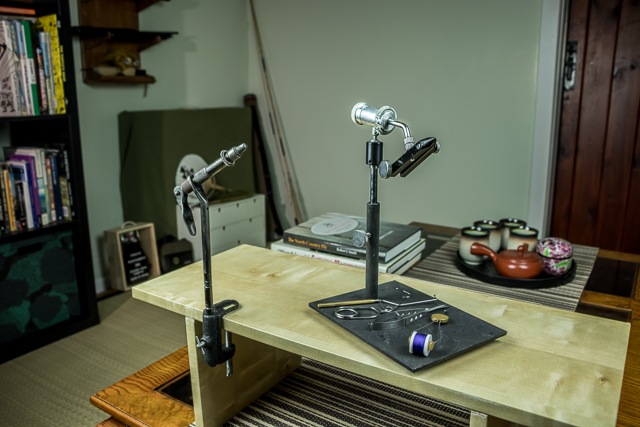
I won’t say that being a fly fisher without being into fly tying leaves the experience incomplete. No, I won’t QUITE say that because I know folks have lots of pressures on their time and living space. BUT I will at least set this thought out and leave it here for you to consider:
Hot Damn is it satisfying to craft something by hand that you then tie on to your tippet and fool a fish with.
Don’t be too mad as I know folks who are really effective and happy fly anglers who would rather save the time and space and just pay for good quality flies. I get it – and I also like buying flies when I go to new places so I can get really good examples of local specialities.
At the same time, I can’t really imagine not including the process of wrapping a few flies up and re-stocking my boxes with patterns just the way I like them (as neat or as messy as that might be) and knowing that they are there as I head out on stream.
Imitative Fly Tying & Provoking a Response
Generally flies either imitate/exaggerate the impression of particular kinds of prey (imitative patterns)– or else they are designed to provoke an aggression/curiosity response from fish (attractor patterns or “lures”).
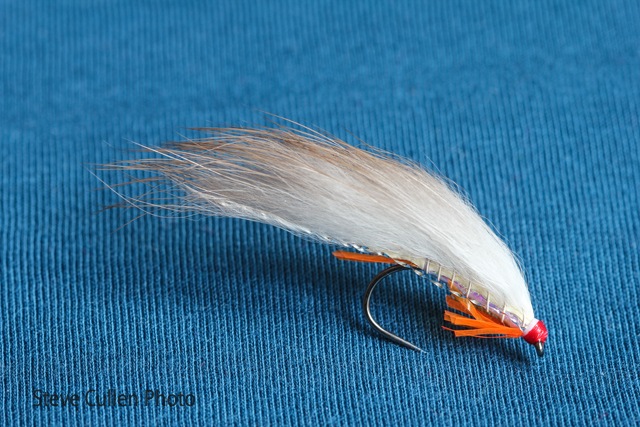
There is also the potential for quite a lot of cross-over between the two main effects of imitation or provocation. So, a pattern can be imitative enough to be accepted as natural food, but certain characteristics might be exaggerated to make them more noticeable (or even create a stronger response as in the minkie above).
Whenever you find a new fly tying pattern to copy (or a recipe to use) it is really useful to look at it to understand what that balance between “attractor” and “imitation” is. Do bear in mind that “imitative” DOES NOT have to equal “hyper-realistic” – in fact the way that trout (and other visual predators) recognise “prey” from “random crap in the environment” is based on simplified cues.
That idea of tapping into that simplified/coded biological system – and sometimes deliberately manipulating the strength of response in that system – is what I base an awful lot of my fly tying and fly fishing around.
And, because I haven’t seen that entire, systematic approach described in quite the same way, I needed a label for it – and I settled on “Fly fishing biohacks” to distinguish it from a more mainstream “take an insect (at a particular stage of development), copy it very precisely and dead drift it as softly as possible over/in front of a fish”.
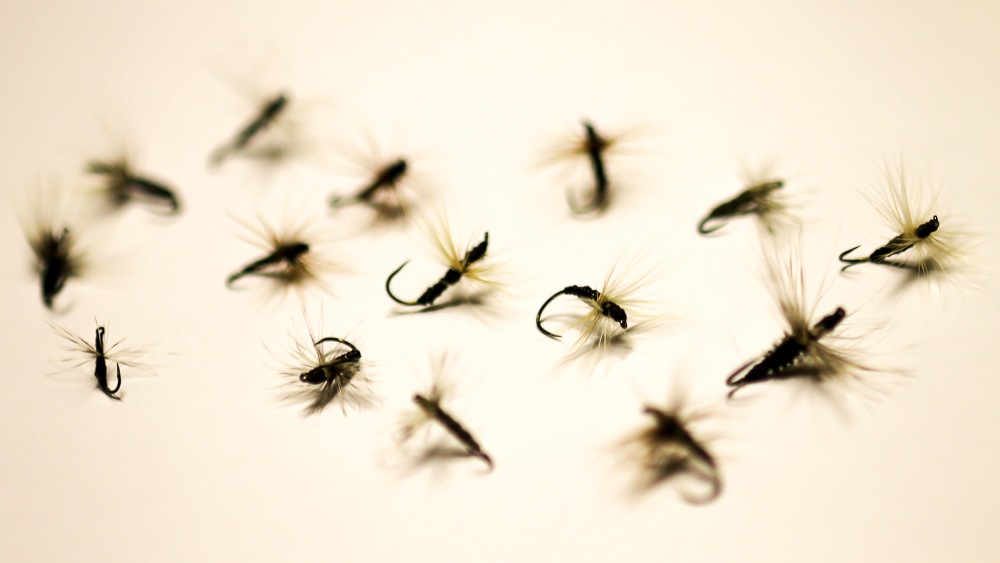
I think that more standard view is a bit more like being allocated a password and following the approved instructions to “log in” to your IT system. That is a whole other area for discussion though…
For this article, it is enough to know that there are a ton of different methods and traditions/collections of patterns and tying styles. So let’s have a quick look at that…
Fly Tying Traditions & Schools
Like great food and drink, tying styles are shaped by their geography and the personalities of the people/communities who dedicate time to fishing with artificial flies. I think it’s fair to say that fly tying originated mainly to target trout living in freshwater (rivers and lakes) and also sea-run salmon/trout.
Nowadays, people tie flies for saltwater game-fish, pike, bass and almost anything that swims – and that clearly leads to BIG diversions in what the flies look like, how big they are and so on.
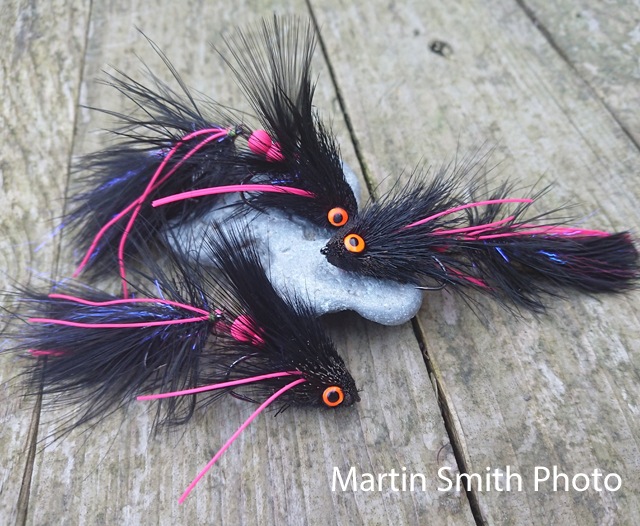
But even within those really varied target species and environments, there is a massive range of different styles and traditions. It is actually pretty overwhelming – even when you only look at the flies for one kind of fish.
Take trout for example…
Tying Flies for Trout in Freshwater
I recently created a post that is basically a guided tour around some of the major types of fly tying you can find in fishing styles that target freshwater trout (not including sea-trout). I tried to keep it as short and to the point as possible and it still runs to 8478 words. It goes from traditional to modern patterns in Europe and America – taking in stillwaters as well as flowing water habitats.
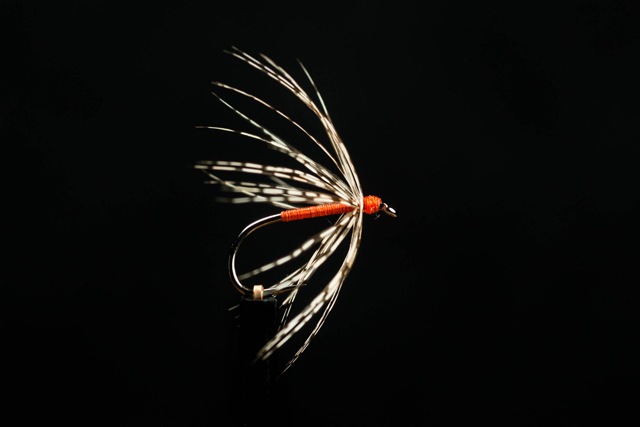
Basically, what I am trying to say here is that you probably need to get a pretty clear idea of what environment and species you will do most of your fishing in before specialising too much in your fly tying.
Beyond the purely practical though, there is a magic and a romance to patterns that were often passed down through families – and even the extended families of folks belonging to a particular fly fishing “school”. This can be an addictive aspect to tap into with your own fly tying – and the ability to choose to become part of a particular lineage of fly fishing’s history is wonderful. North Country wet flies and Catskills dry flies are just two that easily spring to mind.
In a similar way, testing your skills against the established masters of the art is perfectly possible too. You don’t have to be athletic to become one of the best tyers on the planet – you just need to be willing to practice and, if you enjoy it enough, you can become really great at it.
Fly Tying: Getting Started
My own (false) start in fly tying came when I “borrowed” (OK stole) some of my dad’s long-nosed pliers from his plumber’s tool box, clamped a hook in the jaws and gaffer-taped the handles shut. That way, I could then hold this “vise” between my thighs and wrap cotton thread and the tail-feather from the bottom of my pet budgie’s cage onto the hook.
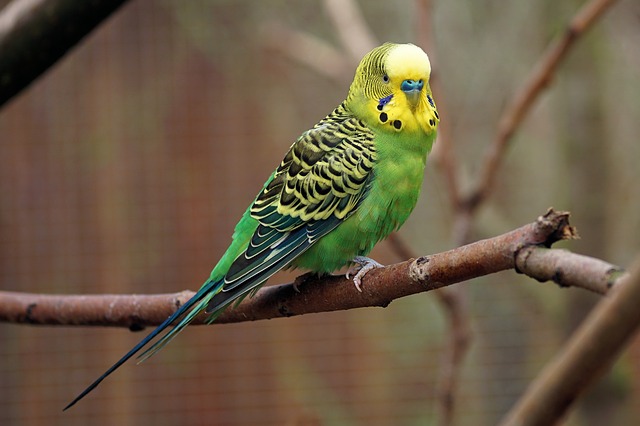
The end result was “not too pretty” and I even decided that trimming the hackle would be a good idea – which didn’t really improve things tbh… I never fished with that “fly” and I gave up the idea of tying flies to fish with for a while. Then on my 14’th birthday a present of my AA vice (still rocking today) and “Imitations of the Trout’s World” by Bob Church and Peter Gathercole started me down a path that I’m still travelling down today.
So while I can’t ever claim to be “self-taught” entirely (since I’ve benefitted from the tuition of all the authors and video stars I’ve ever seen), my personal route in was via materials I studied myself at home.
That is almost certainly not the quickest or surest way of doing it (but it is absolutely feasible if you are willing to stick with it). Here’s some pointers on getting started – and also improving – yourself…
Fly Tying instruction (in person)
Instruction In the USA
Chapters of Trout Unlimited are a great way to hook up with folks who can guide you to tying great flies for yourself. Plus there’s a list (mainly US, but also other countries) for Fly Tying Meetups on meetup.com https://www.meetup.com/topics/fly-tying
UK Instruction: Fly Dressers Guild and More
Check out the BFFI list of major fly tying clubs and particularly local Fly Dressers Guild (FDG) branches here: https://www.bffi.co.uk/learn-to-tie
Enquiring via your fly fishing club or on social media could also hook you up with group or individual instruction.
Fly Tying instruction (DIY)
Fly Tying Videos (to buy)
I’ll be putting together a dedicated article on this soon, but in the meantime you might enjoy following on with the story (and the method demonstration) of how I taught myself to understand the dreaded “whip finish” knot.
I basically figured out how to do it with one finger…which far from being a circus trick turned out to be an excellent stepping stone to then learning how to do a two-finger whip finish and then, finally, using a whip finish tool.
Here’s a video that features a demo of exactly how to do that “one-finger” version. There’s also a LOT of encouragement that you can become a very successful fly tyer and fly fisher in this episode of “Fly Tying Secrets”:
I’ve said it a few times, but it bears repeating, I truly think that the best beginner’s introduction to the essential foundations of fly tying are found in the video that JP shot (there is an entire “Beginner’s” section that introduce the essential techniques of ALL fly tying – before the demonstration of the “go anywhere” selection of 12 Japanese fly patterns).
It’s available to download on the following link (plus check out the DVD section of our shop to find physical disk copies for your region):
Click Here for JP’s Complete Kebari Collection Fly Tying Masterclass
Next, books…
Fly Tying Books
I recently completed a review on some of my personal favourite fly tying books – and as you can see from above this is how I got my own start as a tyer. Although it seems relatively difficult to buy a really bad fly tying book; you need to make sure you get the RIGHT fly tying book for you. In other words it is mainly a case of suitability rather than overall quality.
Having said that, there are some stand-out examples in terms of quality – so why not have the best of both worlds? You may as well have great quality and a perfect match for your target species and tying skill level – so feel free to check out my selection in the review article link above for tried and tested titles available today.
Fly Tying Tools
Sticking to the most common core essentials, here’s a quick overview of useful tools that help make your tying easier and (often) neater.
Vise
Probably the most fundamental – and the most personal – piece of kit for the fly tyer.
I’ll say something that might become a bit of a recurring theme in this post…Although there are one or two poorly-made vises out there, we are fortunate in the modern world that it is quite difficult to find a useless one. I’ve done a pretty detailed review of vises (along with, again, featuring some tried and tested models) in this article:
Click Here for a Deep Dive Exploration of Fly Tying Vises
There is one that I’ve personally come across (which was actually billed as a miniature travel vise), that was total crap – but most should at least do the job. There will always be examples where engineering is more precise and more durable materials are used (and those things become more important if you plan on being an exceptionally high-volume tyer).
However, I think it is fair to say that choice of vise comes down more to your personal preference of hand position (examined in more detail towards the end of the fly tying vise post) – and of course your available budget.
Scissors
A good pair makes a lot of difference if you are aiming for neatness and a really satisfying tying experience. This is true even if (technically) you could get away with not necessarily amazing scissors – or even just the use of a single cutting blade. The ability to reach in to small, confined areas and clip off a straying fibre or tag of material absolutely flush to the dressing is great to have.
If in doubt, you won’t go far wrong with these (N.B. buying them through this link earns us a small commission, but does not cost you any extra):
Link: Dr Slick Arrow Scissors
When it comes to trimming thread after whip finishing, some tyers prefer a sharp “Stanley” knife or “Exacto” knife style blade which can be stored on a magnet on your tying surface (or even vice base). JP uses this method. You may find times when, to trim a material, you’ll still need some small scissors to get into the spot that you need – though this really depends on the patterns and sizes of fly you tie.
Fly Tying Light
I was debating whether to put bobbin holder next in the list, but I do wonder whether – unless you’re only ever going to tie in perfect, full-daylight – having a good bright light source could be more significant? I can well believe that it should help to reduce the eye-strain that a lack of an adjustable and relatively powerful light source puts you at risk of.

Some of these will come with an integral magnifying lens – and all good ones are highly adjustable and “posable” so that you can focus the illumination exactly where you need it at all times. Even the small, LED lights with the collapsible double “car aerial” stems can be a real help when tying indoors and away from full daylight.
Fly Tying Bobbin Holder
Makes life so much easier since it becomes possible to allow it to hang part way through tying a fly (so you don’t need to continually tie knots to consolidate what you’ve done before you get to the end of the tying sequence). Here’s where I might disagree with a LOT of tyers (and I’ll probably fall out with JP in the process too)…
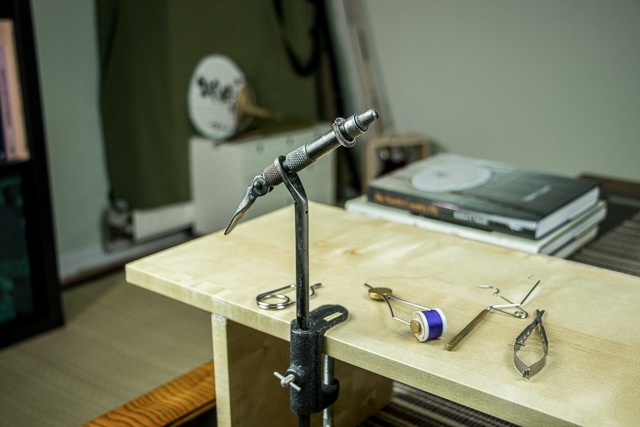
At least for my style of tying, it does not matter at all if I have a metal “nozzle” bobbin holder or a ceramic one. The argument is that super-tough threads such as GSP (Gel Spun Polyester) can cut grooves into the inside of the nozzle…But the way I tie, the thread is NOT running through the nozzle like fishing line running through a tip-ring on a rod…
I’m winding the nozzle at 90-degrees to the hook shank, so the thread is basically “polishing” the entire inner surface/lip continuously. Again, I have a super cheap bobbin holder that probably came in the same shrink-wrap card of tools that my original vise arrived with on my 14th birthday…And I tie with GSP all the time.
Now, don’t let that put you off finely-crafted tools, they are lovely in the hand and a pleasure to tie with. Also, the way that you use your tools might make it a greater risk that you could cut some grooves (which sounds like 70’s Disco, so let’s move on)…
Hackle Pliers
After a vise (and probably on par with a bobbin holder) hackle pliers (pictured above on the left of the bench) are probably the greatest aid to easier and neater fly tying. Again, the mega-basic options are certainly better than trying to use your fingers to hold small hackle tips…
The inclusion of silicone rubber to the jaws – as well as a stretchy band attached to the spring-end of the pliers can be great additions. The first increases grip, without damaging the feather, the second (stretchy band) can help stop you breaking delicate stems by pulling too hard when you wrap.
Whip finish tool
It isn’t necessary to have a whip finish tool in order to tie a whip finish knot. In fact it is probably easier to tie with your fingers! However, the big advantage of the tool is it lets you guide the turns of thread very accurately. You’ll really benefit from that if you tie parachute-hackled flies. Using the tool to guide the turns of thread around and under the feather fibres makes it MUCH easier and neater. As you can see on this YouTube clip here:
There are a few different designs of whip finish tool, and each has slight differences in how they work (so take a bit of getting used to – even if you’ve used another model of whip finish tool before). WIth a bit of practice, they are all basically the same – but the main design feature that makes them more or less effective is whether they have a sharpened/tapered point on the end of the hook that releases the final loop of thread. Having a blunt/flat end means that the last loop will “jump” a little bit right at the last instant.
With a tapered point, you can place the last loop exactly where you want it and it will slide off the hook smoothly.
Fly Tying Videos Online
YouTube can be a real mixed bag when it comes to fly fishing tuition. The fact that literally anyone can upload anything means that there is some powerful nonsense mixed in with the great stuff (at least when it comes to tuition).
However, in terms of fly tying, it is usually pretty easy to separate what is good from what is crap. The clarity of the footage and the appearance of the fly at the end (plus how easy to follow the demo steps are) are reliable indicators.
Some of the most popular (and a tyer with an exceptional feel for what materials can be coaxed into giving particular effects) is Davy McPhail. Here’s an example below and you will find plenty more on his channel.
One note, Davy’s tenkara fly (at least the one I saw on his channel) is a lovely tying exercise – though it doesn’t really come from a functional/tactical understanding of tenkara; which in no way detracts from Davy’s tying abilities (I realise that nobody is quite as geeky as me and John when it comes to Japanese fishing and the associated flies). It is a lovely looking fly mind you…
Anyhoo – here’s John showing an Japanese stiff hackle WET fly (not dry fly) for using in many typical tenkara presentations – including those that rely on “anchoring” a wet fly in opposing current flows or displacing/vibrating water to attract fish. You’ll also see John’s use of the Stanley/Exacto-knife blade to trim his thread:
Also, as another example of an interesting channel with a variety of patterns, Barry Ord Clarke’s “Feather Bender” channel is an enjoyable source of info. Here’s Barry tying an extended body Mayfly:
Now, fly tying and interior décor…
Fly Tying Furniture
Lots of people love to embrace the aesthetic of fly tying and at the same time, as the amount of materials expand (as they have a habit of doing), it is worth having good ways to keep it all tidy.
There are some real “Rolls Royce” style examples of this stuff – for example: http://www.flytyingfurniture.com/
Beware then, that some serious addicts end up with entire “Fly Tying Rooms”. I should perhaps start up a rogue’s gallery of folks’ tying rooms or – at least – tying stations. Feel free to send in pictures of your own dens/cabinets and so on (from the most inventive use of confined spaces to the most ostentatious – all welcome! Just send them to paulgaskellflyfishing@gmail.com )
Erstwhile terror of the Fly Fishing Forums Mike Johnson does a MEAN line in both metalwork/lathe vice fittings and his own wooden tying stations (complete with removable/integral waste trays):
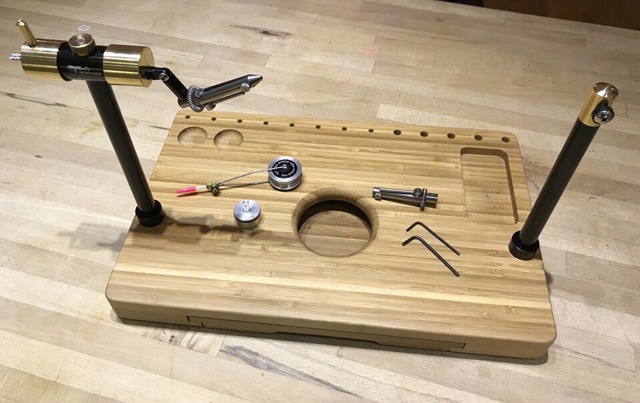
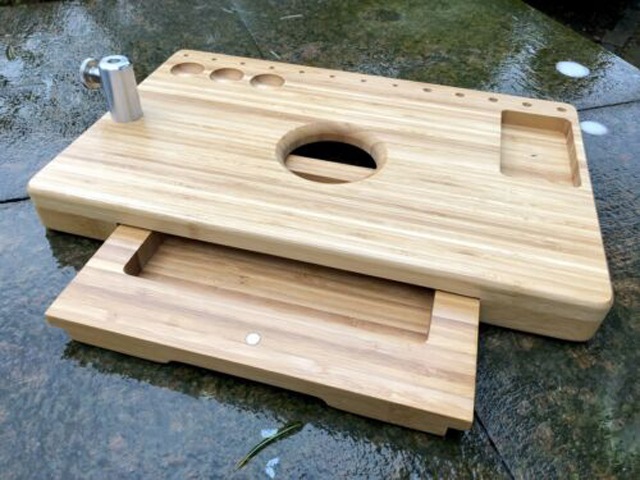
If you’re lucky you can find Mike’s work on Ebay or you might be able to contact him through us – even though we don’t have any business or financial relationship for his fly tying furniture/vise customisation pieces.
Fly Tying Dens
With thanks to Chris Hendriks for sharing his own personal fly tying Den (I could start a rogue’s gallery I sense!) I think this will be a familiar scene to many:
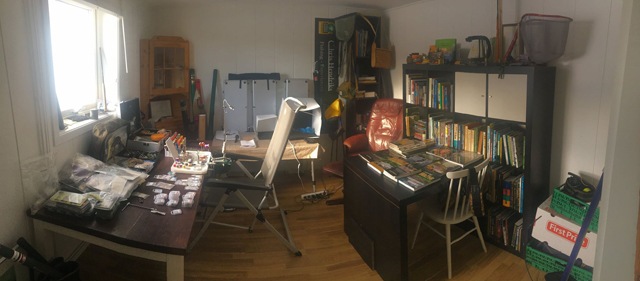
I also discovered this tour of Barry Ord Clarke’s tying attic room on his “Feather Bender” YouTube channel mentioned above:
Note that in the above video, this shows one of the tying styles that you will benefit from a true rotary vise (as explored further in the fly tying vise article) – I suppose the next step up from the fly tying attic is…
The Fly Tying Summer House
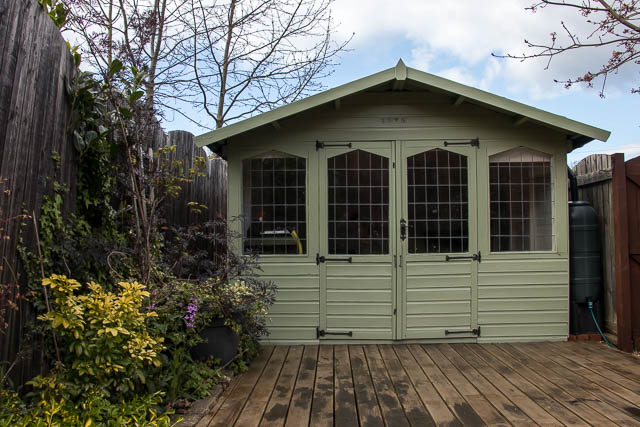
Fly Tying Bench
Obviously probably the largest chunk (unless you decide to go all in on a HUGE fly tying cabinet/wardrobe option) of fly tying furniture is likely to be a specialised bench for your vise, tools and materials. In my indoor fly tying den/office I managed to find a low coffee table that was a good approximation of a table you’d find in traditional rooms in Japan (which matched pretty well with the mat floor I’ve put in). On top of that I can have the little support table that I use for my laptop screen (so I can have a separate keyboard at a comfortable height):
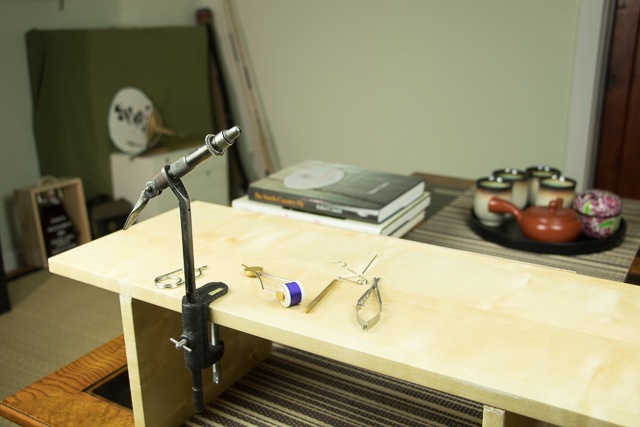
The other nice additions to a fly tying bench include various tool-tidy and material-tidy trays like Mike Johnson’s integral vice/tying furniture above and options with some very nice independent makers creating great stuff for tyers these days (particularly via E-bay). Our good friend Bernard very kindly sent us a photo of his tying station here, which is a lovely example to give you some inspiration for your own tying space:
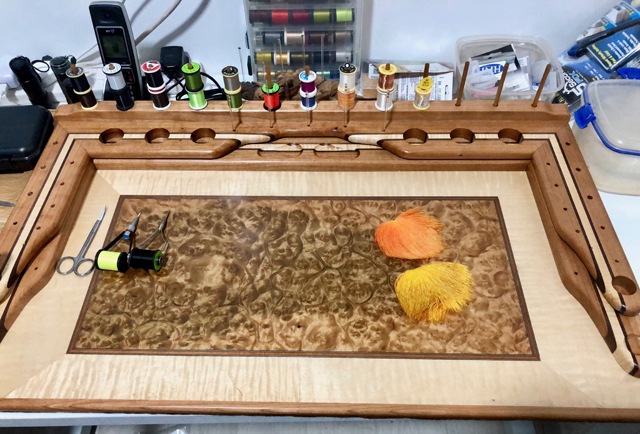
Summary of Thoughts on Fly Tying
OK, I hope that the above has given you some inspiration to either start or get back into your tying this season.
Please let me know in the comments section below if you’ve taken inspiration from any of the contents here – and of course if I’ve missed anything obvious that needs to be included.
Finally, if you’d like FREE Fly Tying 101 Classes, you can register for ours on the following link:
Click to Get Free Access to Fly Tying Tuition
Paul

